The Truth About The U,S Government
⚖️ What the Law Says
Under U.S. law, police do not have a constitutional duty to protect or investigate. That’s the brutal reality. Two major Supreme Court cases established this:
- DeShaney v. Winnebago (1989) – The government is not liable for failing to protect someone from private harm, even if they knew abuse was happening.
- Town of Castle Rock v. Gonzales (2005) – A woman had a restraining order, and her husband killed their kids. The court said police were not required to enforce the order.
Translation: Cops aren’t legally obligated to act, even in life-or-death cases.
🛑 What Actually Happens
So, instead of investigating:
- They decide who they “believe”
- They look at the person’s appearance, emotions, background
- They prejudge credibility, often based on race, gender, class, or perceived mental state
- They close reports at the scene or write “unfounded” or “civil issues” justifications in reports
In Cagney’s case, based on evidence we have shown:
- She made reports
- She had DCS documentation
- She had a protection order
- She had his blatant confession audio, video, texts, emails, medical and Veteran Affairs psychiatrists notes – authentic, undisputable evidence
- Still, no police investigation.
- Police considered everything hearsay or relied on Dominique’s words that “they were just having marital problems; arguing more”
They chose to believe a man over evidence.
However, when this same man’s victim was a White woman, they chose the evidence over him.
Is this the practice of Law Enforcement or bias enforcement?
🧨 And Then They Flip It
When she:
- Asks for help
- Goes public
- Files lawsuits
- Pushes through FOIAs
- Demands Discovery
They turn around and say “You’re a conspiracy theorist!” or “This person is mentally unstable“, “They aren’t credible!”
It’s called institutional gaslighting. And it’s a pattern, especially in:
- Family court
- Human Trafficking cases
- Domestic Violence survivor advocacy
🧾 But Here’s the Catch
When police ignore credible reports, fail to follow up, or let substantiations die on paper:
- That creates civil liability for municipalities if it becomes a pattern
- Survivors can document that pattern to show deliberate indifference or retaliation
- It builds the record for civil rights lawsuits, federal oversight, or outside investigations
That’s exactly what Cagney appears to be doing – showing that it wasn’t chaos, it was coordinated, colluded and corrupted.
That it isn’t a broken system, but a system meant to break people who question and expose it.
Logic: Can police choose to not investigate ALL reported crimes and then say there was no evidence of a crime? Investigations is where you gather evidence, not a conversation alone.
🔥 Bottom Line
Police are not legally obligated to investigate, but they should. When they don’t and someone like Cagney documents every single time they refused – the fault lies with the system, not the survivor.
🧠 What Happens When You Tell the Truth
When whistleblowers expose systemic abuse, platforms don’t just ignore them – they suppress them:

📉 Our TikTok was banned for posting Deborah White’s testimony. Ms. White is a federal whistleblower who worked with HHS. White testified that she discovered several instances of human trafficking involving child migrants.
According to White, despite reporting the human trafficking case, “children continued to be sent to dangerous locations with improperly vetted sponsors.” White said:
- “Children were sent to addresses that were abandoned houses or nonexistent in some cases,” ;
- “In Michigan, a child was sent to an open field, even after we reported making a 911 call after hearing someone screaming for help, yet the child was still sent.”
- “Please understand,” White said. “This is nothing less than taxpayer-funded child slavery, sanctioned by the government.”
White said when she expressed concerns about contractor failures and asked to see the contract, she was told not to ask for it again. The HHS whistleblower testified that she then had to take it upon herself to create trainings that would equip case managers to flag cases of human trafficking or sexual abuse. She also claimed that ORR officials never met with sponsors face-to-face and that fraudulent documents were “rampant.”
Sound familiar?
📉 Our X (formerly Twitter) account is currently shadow banned – our views dropped drastically after exposing specific names and jurisdictions. In an effort to hide the suppression, the posts are available for us, but not available for view for others. It also says we have 300+ posts, but at the same time we haven’t posted yet?
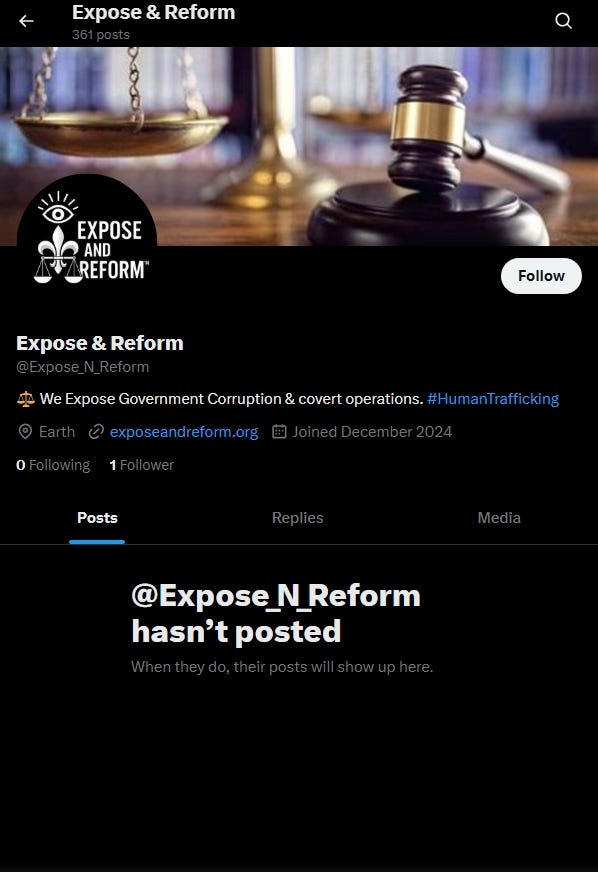
Again, this is what they don’t want out in the public – the TRUTH. Cagney was trafficked and they are actively covering it up. What would have happened if Cagney didn’t have us as support?
📉 Facebook deleted our post after going public within minutes, falsely claiming we violated cybersecurity rules. We ask you to read our post below and make it make sense.
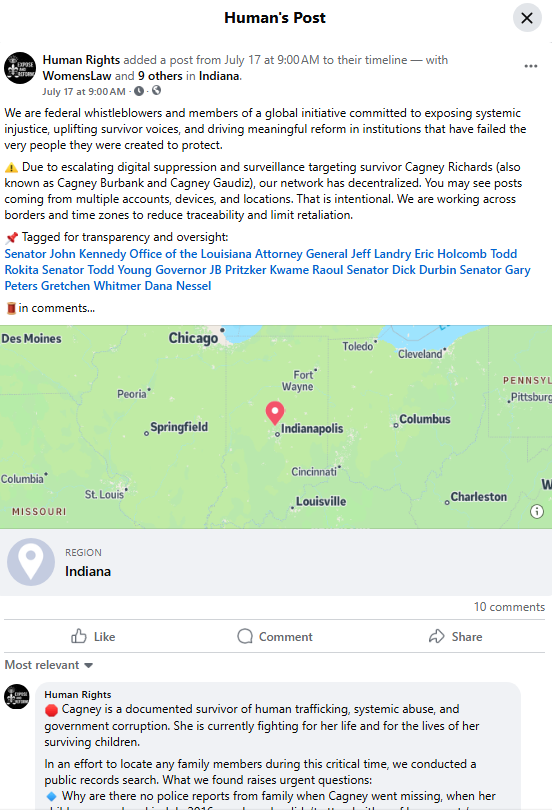
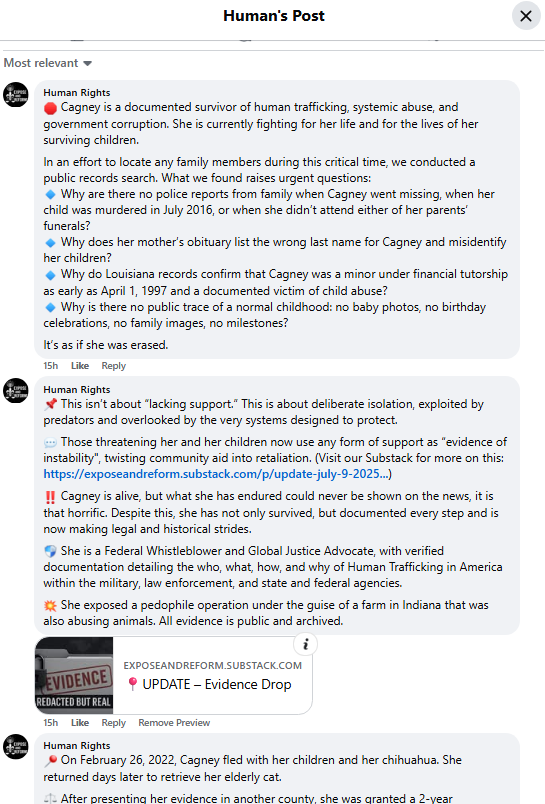
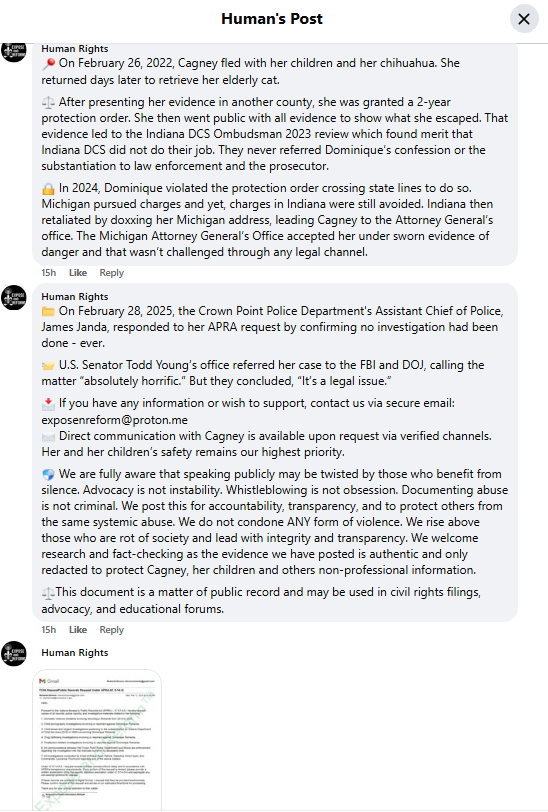
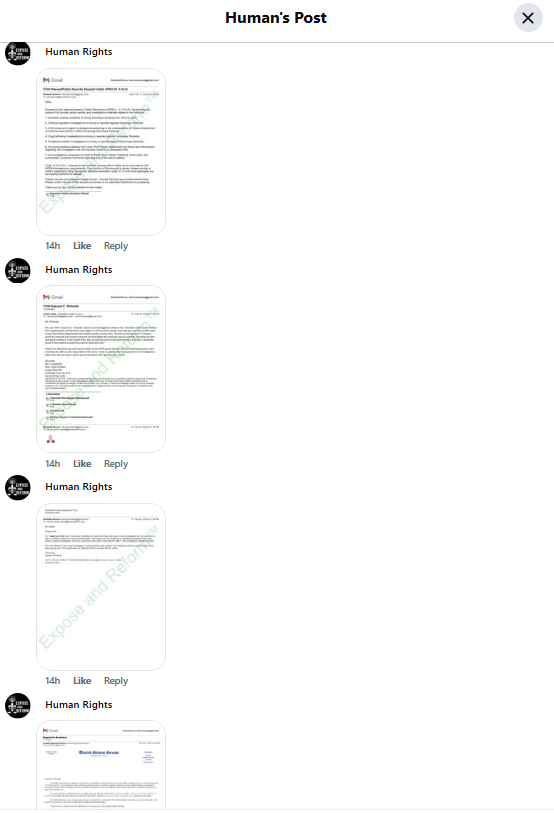
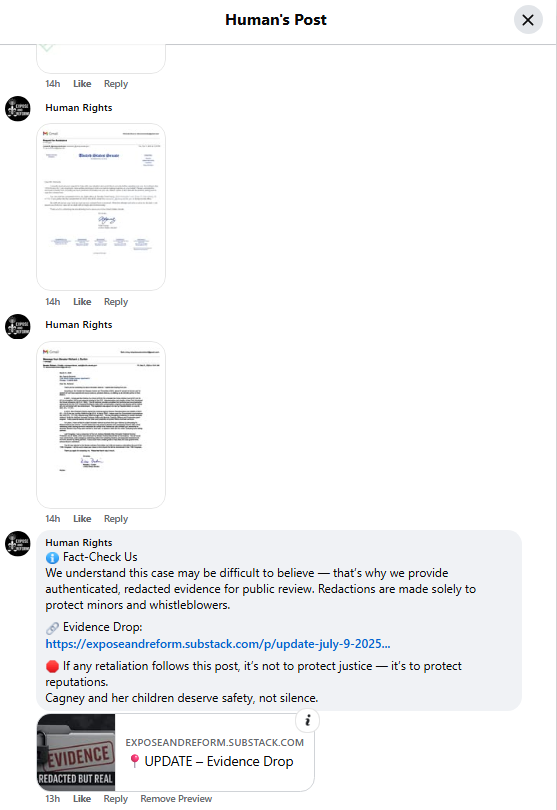
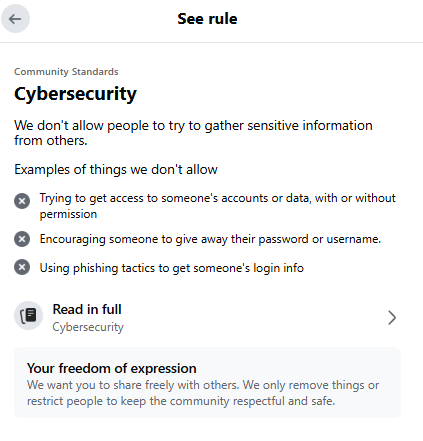
📍This isn’t theory
It’s documented retaliation. Cagney has informed members Congress, with evidence, about this exact thing. She’s documented digital suppression and retaliation in real-time, as it happens. So, we took over and now, we experience the same.
👀 We challenge you:
- Go to Facebook, TikTok, and X.
- 🔍for Cagney Richards and any of the names listed in her federal lawsuit.
- Then tell us in the comments what you see. Is her name non-existent? Are her posts visible? Are public interest names being wiped from results?
This is evidence of a machine built to hide the truth and retaliate against those who expose it.
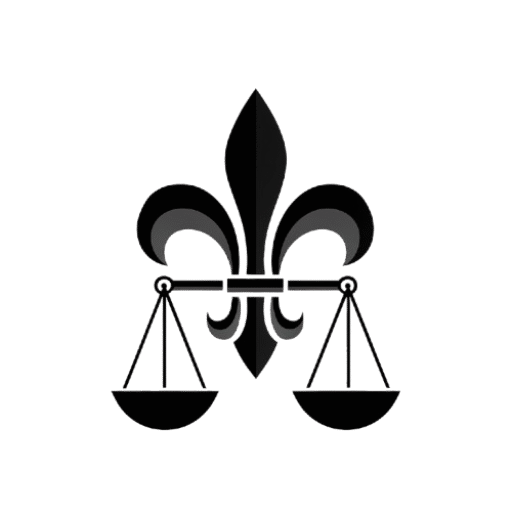
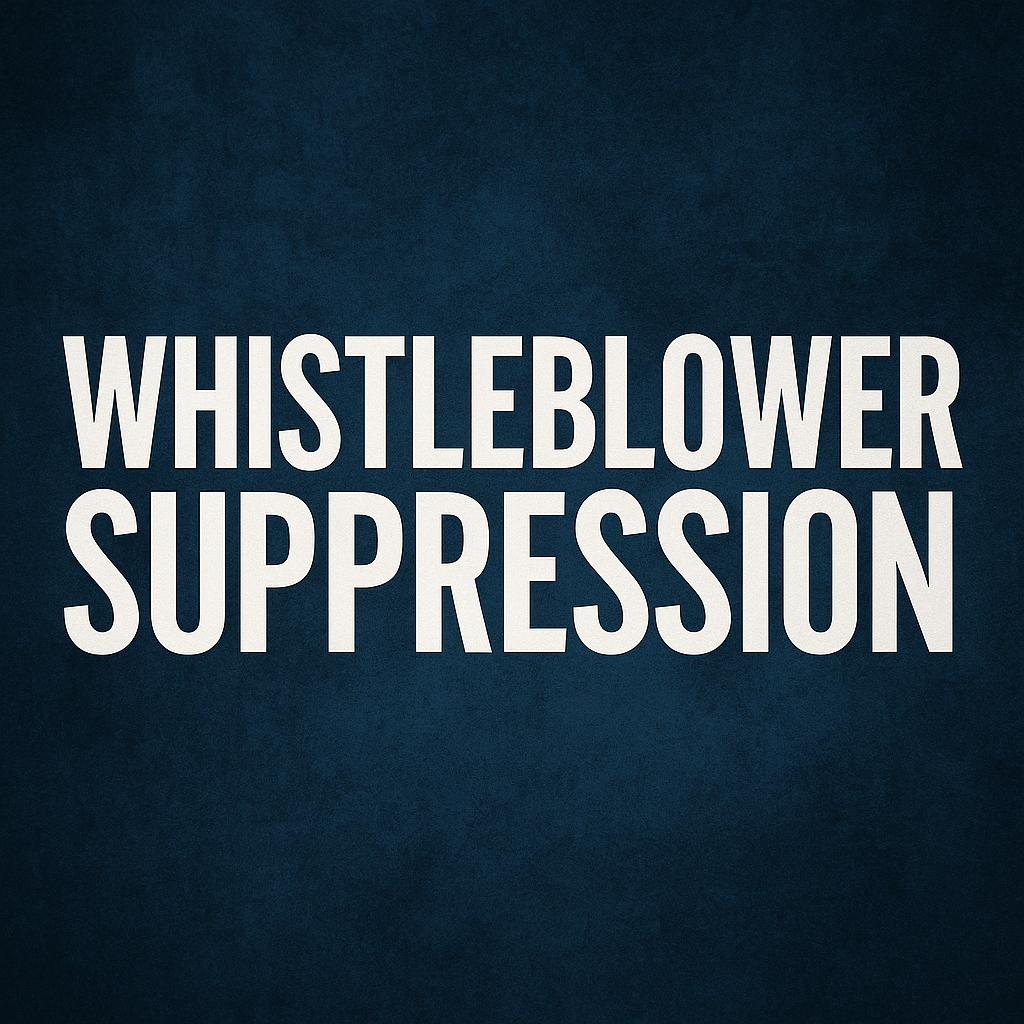
Leave a Reply